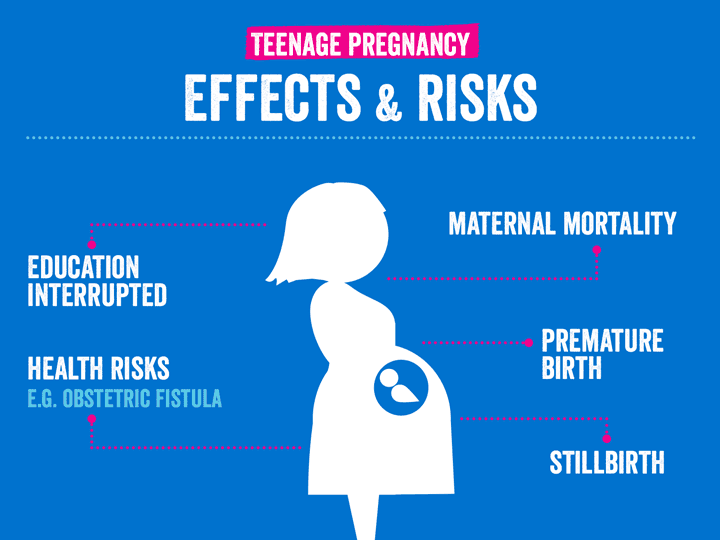
Teenage Pregnancy: A Comprehensive Analysis of Its Effects
Introduction
Teenage pregnancy, defined as pregnancy occurring between the ages of 13 and 19, poses significant challenges for both the young mothers and their children. The United States has one of the highest teenage pregnancy rates among developed countries, with approximately 750,000 pregnancies occurring annually among adolescents. This issue has far-reaching consequences, affecting the health, education, and economic well-being of both the teenage mothers and their children.
Health Effects on Teenage Mothers
Teenage pregnancy can have detrimental effects on the health of the mother. Young mothers are at an increased risk for premature birth, low birth weight, and other pregnancy complications. They are also more likely to experience anemia, gestational diabetes, and postpartum depression. Additionally, teenage mothers are less likely to receive adequate prenatal care, which can further compromise their health and the health of their babies.
Educational Impacts
Teenage pregnancy often disrupts the education of young mothers. Many pregnant or parenting teens drop out of school, either due to the physical demands of pregnancy or the social stigma associated with it. Dropping out of school has long-term consequences for the mother’s earning potential and future economic opportunities. Additionally, teenage mothers who do remain in school may face challenges balancing their academic responsibilities with the demands of parenting.
Economic Consequences
Teenage pregnancy has significant economic implications for both the teenage mother and her child. Young mothers are more likely to live in poverty and rely on government assistance. They are also less likely to complete their education and secure stable employment, which can perpetuate a cycle of poverty for both themselves and their children. Additionally, the costs associated with raising a child, such as healthcare, childcare, and education, can be overwhelming for teenage mothers.
Effects on Children of Teenage Mothers
Children born to teenage mothers face a range of challenges that can impact their health, development, and well-being. These children are more likely to be born prematurely or with low birth weight, which can lead to health problems later in life. They are also more likely to experience developmental delays, behavioral problems, and academic difficulties. Additionally, children of teenage mothers are at an increased risk for poverty, neglect, and abuse.
Contributing Factors to Teenage Pregnancy
Numerous factors contribute to teenage pregnancy, including:
- Lack of access to comprehensive sex education: Many teenagers lack access to accurate and age-appropriate information about sex and contraception. This can lead to unplanned pregnancies and risky sexual behaviors.
- Poverty and socioeconomic disadvantage: Poverty and socioeconomic disadvantage are strongly linked to teenage pregnancy. Young people living in poverty may have limited access to healthcare, education, and other resources that can help them make informed decisions about their sexual health.
- Peer pressure and social norms: Peer pressure and social norms can influence teenagers’ sexual behavior. In some communities, teenage pregnancy is seen as a rite of passage or a way to gain status.
- Mental health issues: Teenagers with mental health issues, such as depression or anxiety, are at an increased risk for teenage pregnancy. These issues can impair their judgment and decision-making abilities.
Prevention and Intervention Strategies
Preventing teenage pregnancy requires a comprehensive approach that addresses the underlying factors that contribute to it. Effective prevention strategies include:
- Providing comprehensive sex education: All teenagers should have access to medically accurate and age-appropriate sex education that covers topics such as contraception, sexually transmitted infections, and healthy relationships.
- Addressing poverty and socioeconomic disadvantage: Programs aimed at reducing poverty and improving socioeconomic conditions can help create a more supportive environment for young people and reduce their risk of teenage pregnancy.
- Empowering young people: Empowering young people with knowledge, skills, and resources can help them make informed decisions about their sexual health. This includes providing access to contraception, counseling, and support services.
- Challenging social norms: Challenging social norms that condone or encourage teenage pregnancy is essential for changing attitudes and behaviors. This can be done through public awareness campaigns, media literacy programs, and community engagement initiatives.
Conclusion
Teenage pregnancy is a complex issue with far-reaching consequences for both the teenage mothers and their children. It is essential to address the underlying factors that contribute to it and implement effective prevention and intervention strategies. By providing comprehensive sex education, addressing poverty and socioeconomic disadvantage, empowering young people, and challenging social norms, we can help reduce the incidence of teenage pregnancy and improve the lives of young people and their families.